Rafael Nadal concludes a remarkable Grand Slam year by beating Kevin Anderson to win the US Open
The Spaniard won his sixteenth Grand Slam title by beating Anderson 6-3, 6-3, 6-4 with a display that was even more convincing than that scoreline might suggest
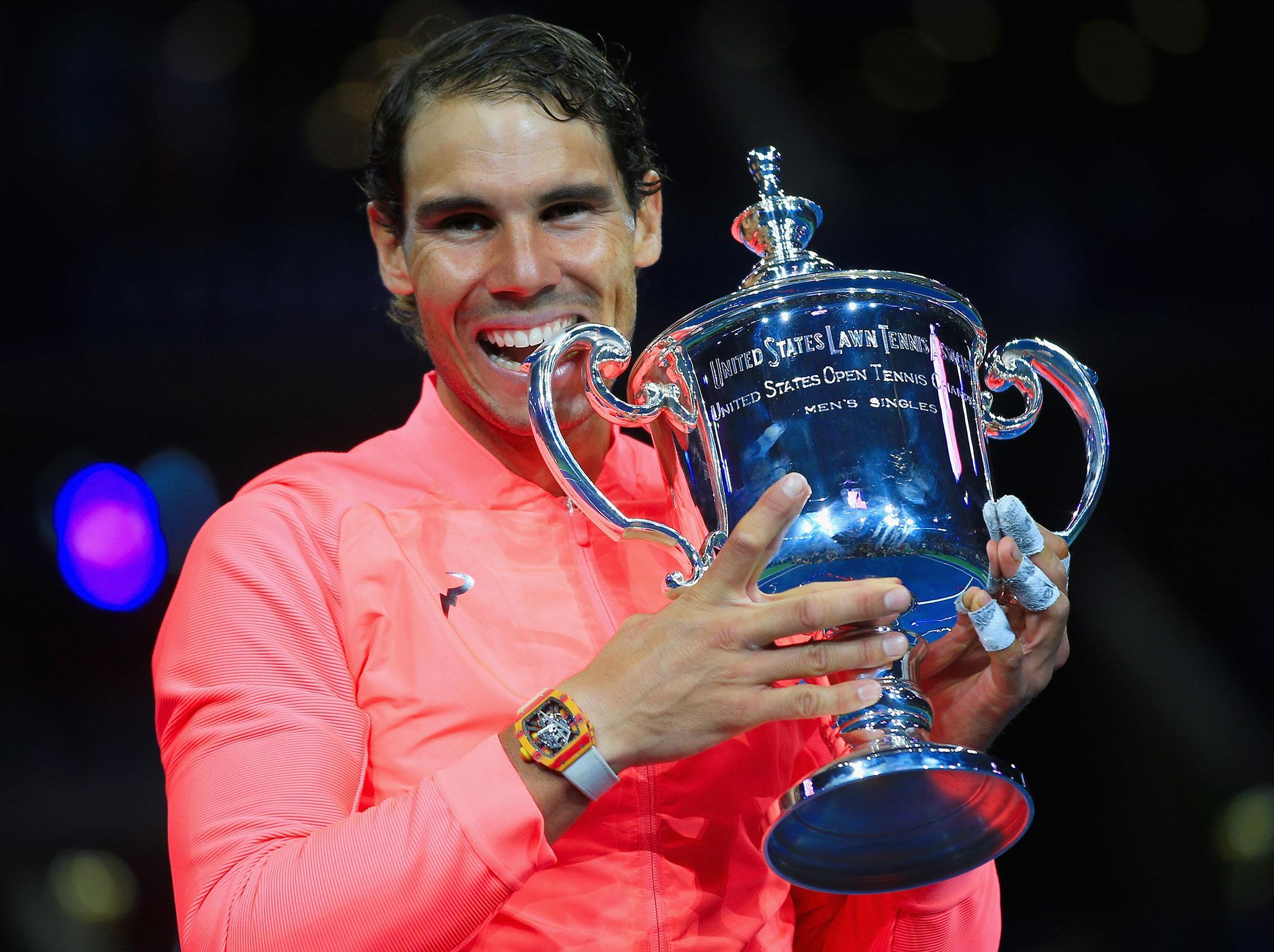
Your support helps us to tell the story
From reproductive rights to climate change to Big Tech, The Independent is on the ground when the story is developing. Whether it's investigating the financials of Elon Musk's pro-Trump PAC or producing our latest documentary, 'The A Word', which shines a light on the American women fighting for reproductive rights, we know how important it is to parse out the facts from the messaging.
At such a critical moment in US history, we need reporters on the ground. Your donation allows us to keep sending journalists to speak to both sides of the story.
The Independent is trusted by Americans across the entire political spectrum. And unlike many other quality news outlets, we choose not to lock Americans out of our reporting and analysis with paywalls. We believe quality journalism should be available to everyone, paid for by those who can afford it.
Your support makes all the difference.Kevin Anderson has been building his confidence this year with self-conscious celebrations of his best shots, but no amount of fist-pumping by the South African was going to put off Rafael Nadal. At the end of a remarkable Grand Slam year, the 31-year-old Spaniard won the US Open here on Sunday when he beat Anderson 6-3, 6-3, 6-4 with a display that was even more convincing than that scoreline might suggest.
Nadal was magnificent. Whether he was returning serve from way behind the baseline, serving with relentless accuracy, thumping his ferocious ground strokes into all corners of the court or volleying decisively at the net, the world No 1 was a force of nature, driving himself forward to ever greater heights.
Anderson, who as the world No 32 was the lowest ranked finalist here since the rankings were launched 44 years ago, was swept aside by Nadal’s brilliance, but should be consoled by the fact that it would be hard to imagine anyone resisting the Spaniard when he is playing as he has for most of this tournament.
We will never know, of course, but how might a fit and healthy Roger Federer have fared if he had lived up to his seeding and met Nadal in the semi-finals here? With Nadal in this form it would have taken an almost super-human performance to beat him.
Instead Nadal and Federer have ended this extraordinary Grand Slam season with honours even, both men having started it with doubts about their long-term future after finishing their 2016 campaigns early because of injury.
Federer won the Australian Open and Wimbledon, while Nadal won his 10th French Open title and his third US Open and recaptured the world No 1 ranking from Andy Murray. What a fitting end to the year it would be if Nadal and Federer met in the last match of the season at the Nitto ATP Finals at the O2 Arena in London in November.
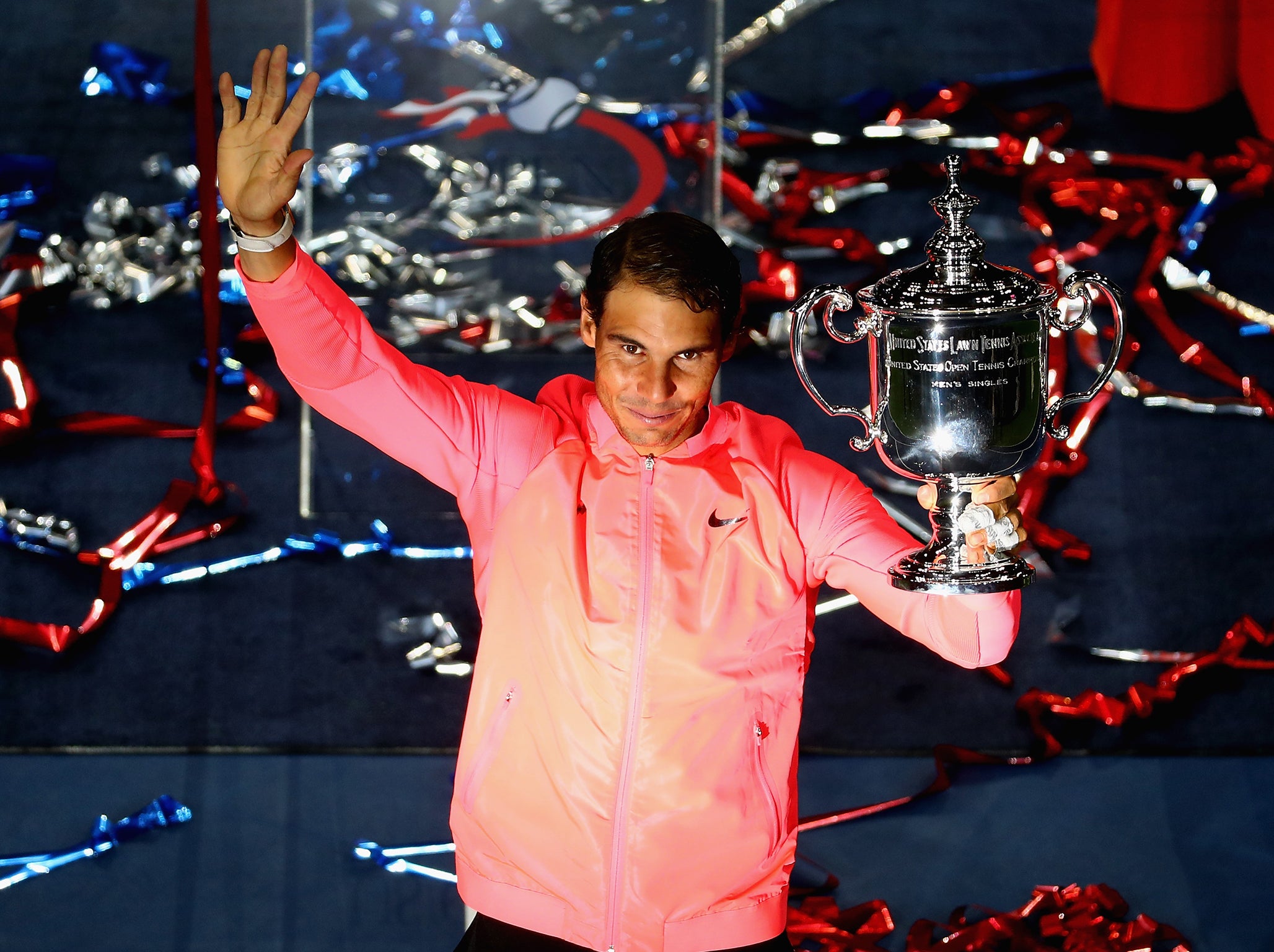
This victory, meanwhile, was an appropriate way for Nadal to finish his last Grand Slam tournament with his uncle, Toni Nadal, as his travelling coach. While Toni will still play a big part in his nephew’s career from his base at the world No 1’s academy in their native Majorca, the coaching reins will be handed over next year to Carlos Moya, who was here sitting alongside Toni.
“I can’t thank him enough for all the things that he did for me,” Nadal said afterwards when asked about his uncle. “Probably without him I would never be playing tennis. It’s great that I had somebody like him pushing me all the time. For sure he is one of the most important people in my life.”
Nadal’s victory extended the remarkable stranglehold of the “Big Four” on the sport’s biggest prizes. Nadal, Federer, Murray and Novak Djokovic have won 46 of the last 51 Grand Slam tournaments dating back to Marat Safin’s victory at the 2005 Australian Open, with Stan Wawrinka, Juan Martin del Potro and Marin Cilic the only gatecrashers on their elite party.
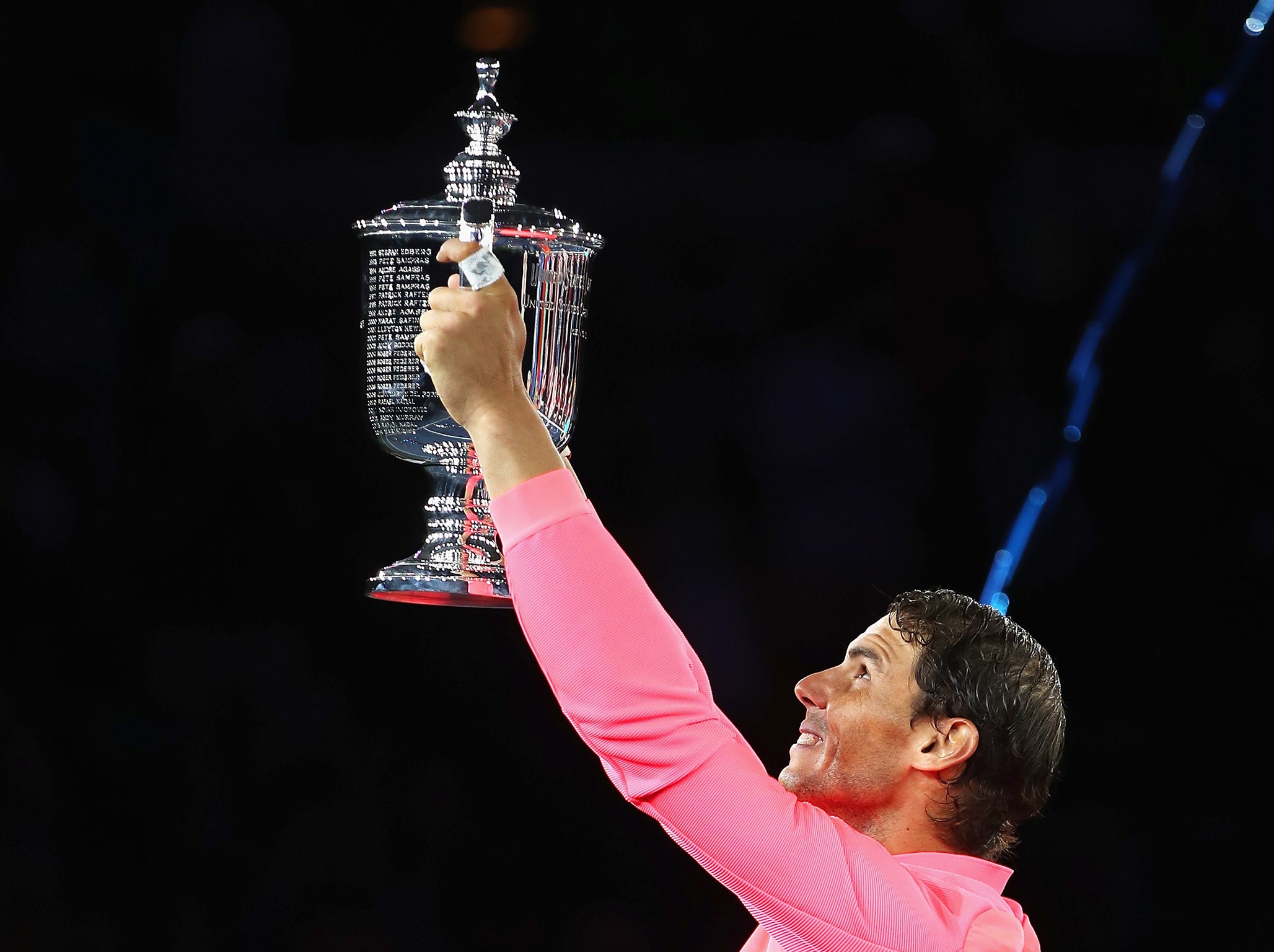
By winning his 16th Grand Slam title Nadal is back to within three of Federer’s career record total. Like Federer, the Spaniard has been rejuvenated this year and has maintained his form and fitness while Djokovic and Murray, for so long their heirs apparent, have struggled.
When Nadal won the French Open three months ago it was his first Grand Slam title for three years, while this was his first at any hard-court tournament since the start of 2014. Since winning the Doha title that year the Spaniard had played in 34 hard-court tournaments but not won any of them, despite reaching eight finals.
“It’s just unbelievable what happened this year after a couple of years with some troubles, injuries, some moments not playing well,” Nadal said. “Since the beginning of the season it has been very emotional because in the first important event of the year in Australia I think I played a very high level of tennis. And now I have closed the Grand Slam season here, winning in New York.”
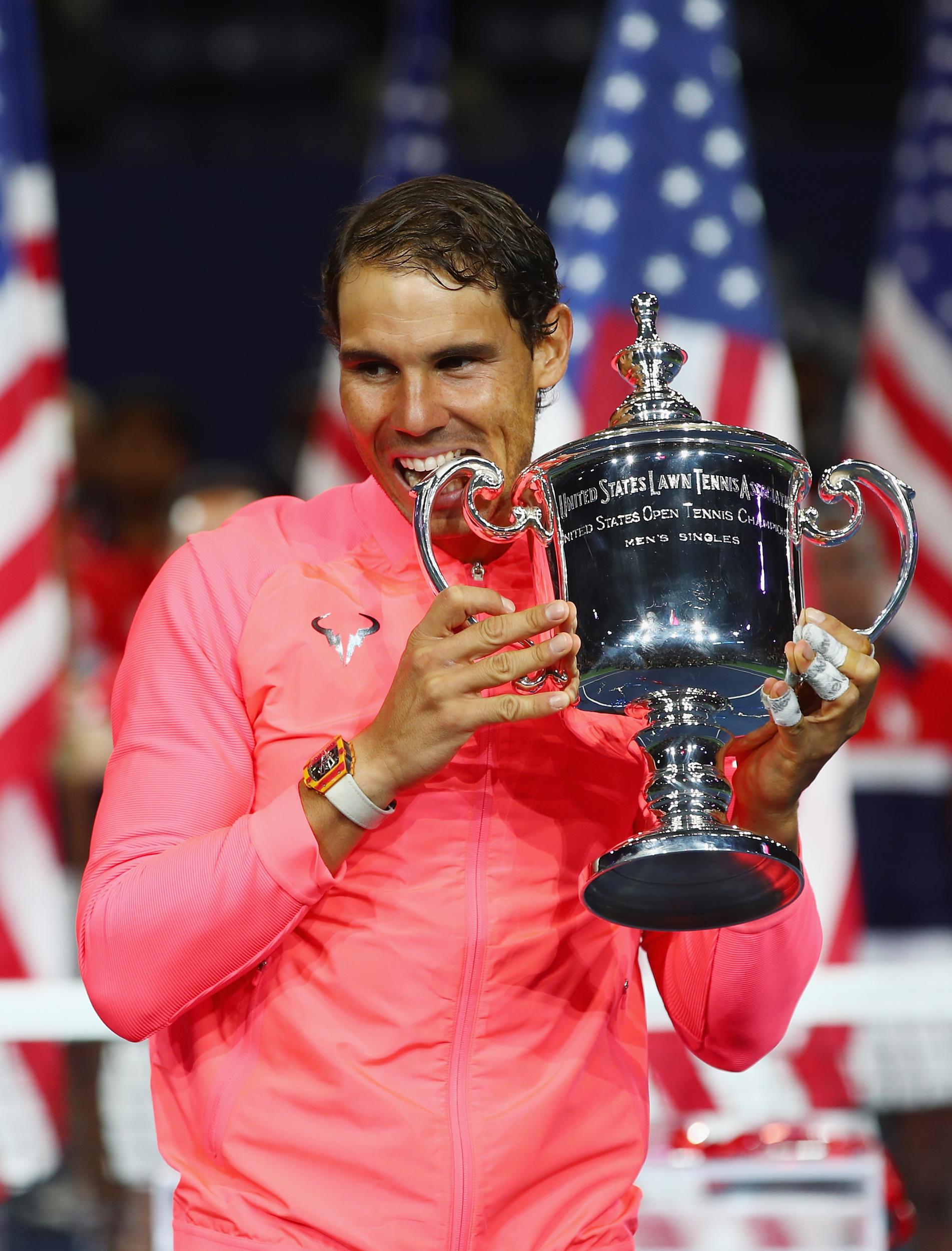
At the presentation ceremony Anderson congratulated Nadal. “I know we’re the same age, but I feel like I’ve been watching you my whole life,” he said. “You’ve been an idol of mine. It’s tough playing you. You proved it again tonight. You’re one of the greatest ambassadors of our sport.”
Anderson, who has fought his way back to the top after major injury problems last year, was the first South African to play in the final here since Cliff Drysdale was runner-up in 1965 and the first to play in any Grand Slam final since Kevin Curren lost to Mats Wilander at the Australian Open in 1984. Nadal, who was playing in his 23rd Grand Slam final, had won all four of his previous meetings with Anderson, dropping just one set in the process.
This has been one of the coolest US Opens in living memory and the conditions on the final day were typical of the fortnight. It had been a bright enough day, but when the players walked into Arthur Ashe Stadium for the 4.30pm start the temperature was a very pleasant 22C.

Anderson, a 6ft 8in giant with a huge serve, had gone into the final having won 103 of the 108 service games he had played in the tournament, but from the start he was under pressure from the quality of Nadal’s returns. The South African had hit 114 aces in his first six matches but struggled to find his way past Nadal, who stood to receive serve about 12 feet behind the baseline.
Nadal, who served beautifully and did not have to defend a single break point in the match, might be at his best when scrapping from the baseline, but the Spaniard showed once again what a magnificent player he can be at the net. He chose his moments when to attack, but volleyed superbly whenever he moved forward, winning all 16 points when he got into the net. Anderson, in contrast, won just 16 of his 34 forward forays.
Anderson struck the ball well from both flanks, but rarely looked comfortable when he needed to volley. The South African much prefers the security of the baseline, but against Nadal that is never an easy place to set up shop.
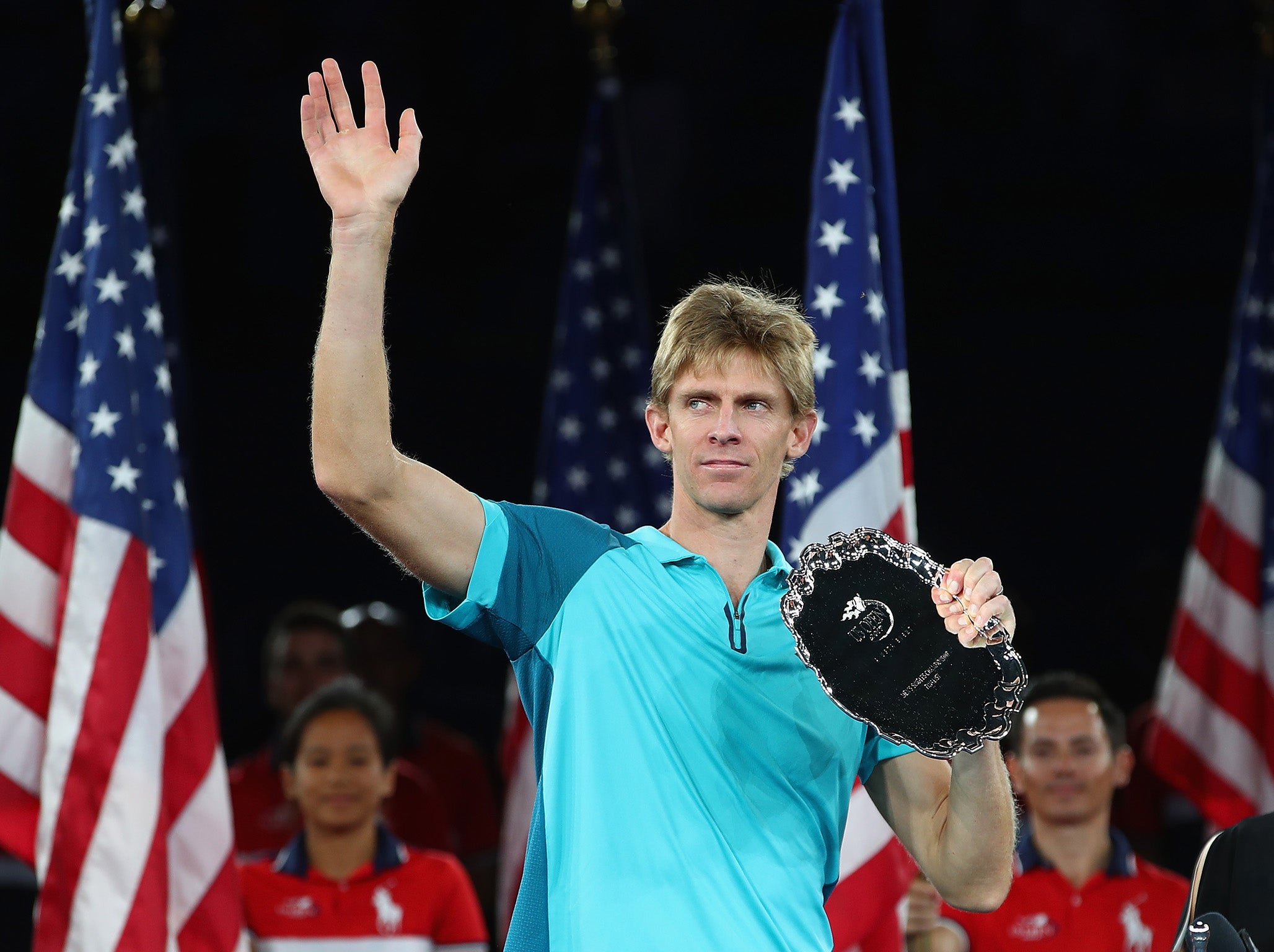
If Anderson was to have any chance he needed to keep holding his serve, but that was easier said than done in the face of Nadal’s onslaught. In his first four service games Anderson had to play 50 points as Nadal kept taking him to deuce. In contrast there were only 20 points in the Spaniard’s first four service games.
The first break came in the seventh game as Anderson double-faulted on deuce and then put a loose forehand wide. Two games later Nadal broke again, converting his first set point with an assured stop volley after sprinting into the net.
In the second set Anderson held out until the sixth game, when Nadal again charged forward on break point. After three firm volleys had given him the break Nadal fist-pumped in animated celebration.
Nadal broke in the first game of the third set, but to Anderson’s credit he made the Spaniard serve out for his victory. At 5-4 and 30-30 Nadal went to match point when Anderson’s backhand return flew beyond the baseline, only for the South African to win the next point with a fine return.
A big serve by Nadal created a second match point, which he converted with a volley behind another bold serve. We have grown accustomed to seeing Nadal fall on his back in celebration at winning Grand Slam titles but this time he was more restrained as he stood motionless, his arms outstretched as he looked up into the New York sky. However, nobody should doubt how much this victory meant to one of sport’s ultimate competitors.
Join our commenting forum
Join thought-provoking conversations, follow other Independent readers and see their replies
Comments